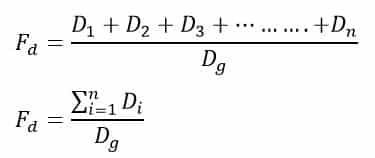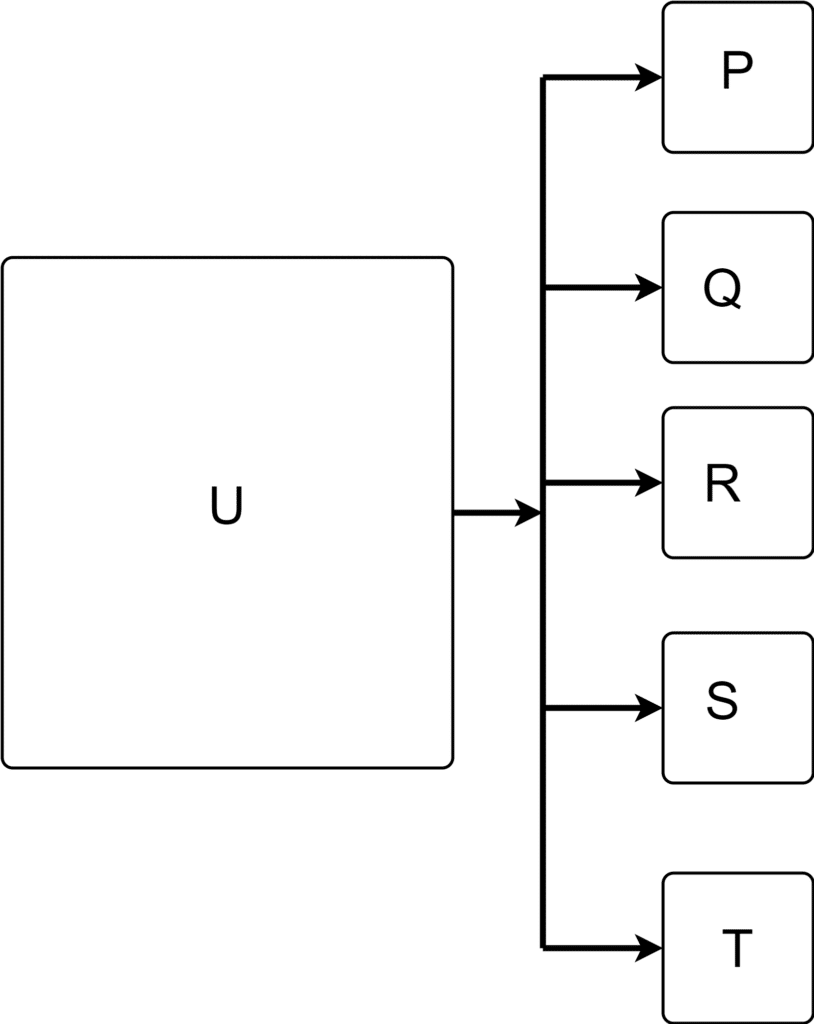We can define the Diversity factor as the ratio of the sum of the maximum demands of the various load centers to the maximum coincident demand of the whole system.

Mathematically, we can express the diversity factor as:

Where,
FD – Diversity factor
Di – Maximum demand of load I, irrespective of the time of occurrence.
Dg = Maximum coincident demands of a group of n loads.
Unfortunately, it is not possible to store the electricity in a huge amount for its later use. Therefore, it is necessary to generate electricity as per the requirements on the consumer side. The electrical sources, generating stations, or transformers at the substation must be capable to fulfill the load requirements at all times of the day. If all the loads connected to the generator or substation demand load simultaneously, then it is not possible to fulfill the load requirements or we have to install a bigger generating station or substations.
However, in fact, the maximum, demand does not happen at the same time. The maximum load demands of various load centers occur at different time periods of the day. Therefore, we can construct a smaller electrical source to cater to the maximum demands that occur at different time periods. Thus, the diversity of the maximum demands of various loads allows us to design a generating station and substations for the economic installation of the electrical equipment.
Here, a diversity factor is a very important parameter that shows how the different loads demand maximum loading during a specific time period of the day.
The maximum load of all the load centers can not be more than the maximum load of the power source whether it is a generator or transformer. The maximum demand during the day at any point in time can not be more than the generating capacity of the generator or the power-delivering capacity of the transformer.
Let us understand the concept of diversity factor by taking an example.
A substation U delivers the load to load centers P, Q, R, S & T. The maximum load of substation A is U megawatts. The maximum demand of load centers is A megawatt, B megawatts. C megawatts, D megawatts, S megawatts, and T megawatts.

From the above figures the diversity factor would be;

The above mathematical expression clearly shows that the diversity factor equal to unity is not good. The diversity factor must be greater than 1 for an economic generation. A high diversity factor shows that the various loads demand maximum load at different time periods during the day.
Example: A power transformer at a substation has a capacity of 3000 KW. It caters to various types of loads. The industrial load is 3000 kW. The domestic and municipal loads are 200 kW and 100 kW respectively. The diversity factor of the transformer is;

Solved Problems on Diversity Factor
Example 1: One Main Feeder have two Sub feeder (Sub Feeder A and Sub Feeder B), Sub Feeder-A have demand at a time is 35 KW and Sub Feeder-B have demands at a time is 42 KW, but the maximum demand of Main Feeder is 70 KW. Determine the Diversity Factor?
Solution:

Total individual Maximum Demand
= 35+42 = 77 KW
Maximum Demand of main feeder is
70 KW
So, from above equation of diversity factor
Diversity factor of the main feeder
= 77/70 = 1.1
Example 2: The maximum (peak) load on a thermal power plant of 60 MW capacity is 50 MW at an annual load factor of 50%. The loads having maximum demands of 25 MW, 20 MW, 8 MW and, 5 MW are connected to the power station.
Determine:
(a) Average load on power station
(b) Demand factor
(c) Diversity factor.
Solution:
Maximum Demand on power Station
= 50 MW
Load Factor = 50%
(a) We can calculate Average Load by using formula,

(b) Demand factor

(c) Diversity factor

Example 3: A diesel power plant supplies the following loads to various consumers −
Domestic light = 500 kW
Domestic power = 100 kW
Industrial consumers = 2000 kW
Commercial establishments = 700 kW
If the maximum demand on the power station is 3000 kW. Determine the diversity factor of the power plant.
Solution
The diversity factor of a power station is given by,
